What Homebuilders Need To Know About Termites
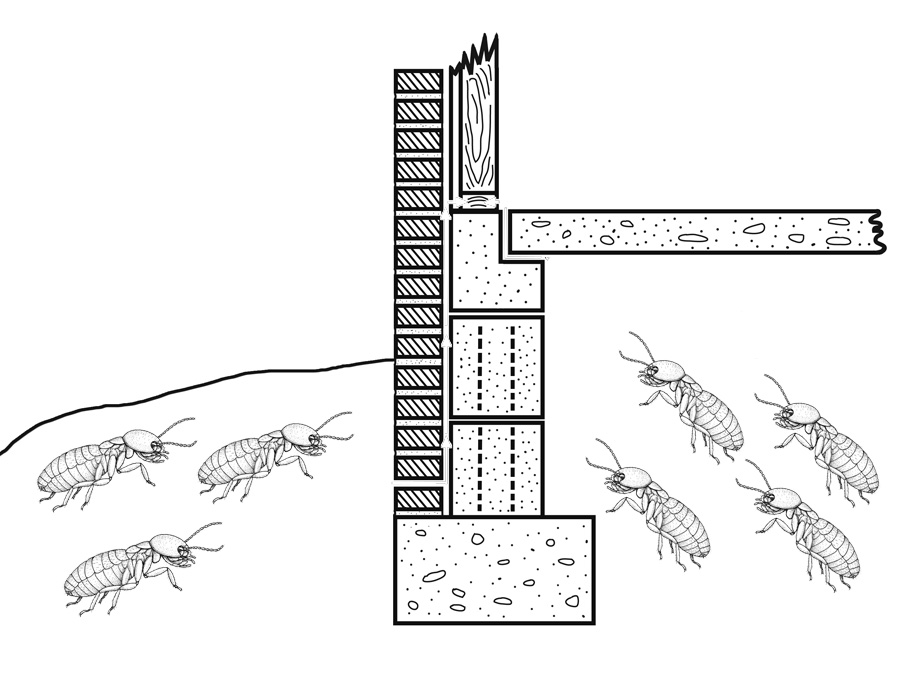
There are a lot of important details to take care of when you build a new home. To construct a building that will last, you must do certain things at the right time and in the right way. Termite control is one such detail. If you forget to do the termite pretreatment on a new home or an addition to an existing home, the building will not look any different or be any less sound 6 months after it is completed. But it is almost certain to be infested with termites sometime in the future. This publication explains the building practices and insecticide treatments required to build a home that is resistant to infestation by subterranean termites.
Two main species of subterranean termites threaten Mississippi homes. The eastern subterranean termite, Reticulitermes flavipes, occurs throughout the state. Nonnative Formosan termites, Coptotermes formosanus, currently occur in 26 Mississippi counties, mostly in the southern portion of the state, and continue to spread slowly. Both species are serious threats to Mississippi homes and buildings. Fortunately, the biology of these two groups of termites is similar enough that the same home protection procedures work against both species.
There are two main ways to safeguard a building against termite attack:
- Follow good termite-deterring construction practices.
- Apply a termite pretreatment.
Termite-deterring construction practices include things that are done or avoided when building the house to reduce the risk of termite attack. The termite pretreatment is a set of insecticide treatments that are applied by a professional pest control company at specific points in the construction process to help prevent termites.
Termite-Deterring Construction Practices
There are three major termite-deterring construction practices:
- Avoid leaving any wood or other cellulose-based debris underneath or near the finished building.
- Avoid allowing any direct contact between soil and wood—including treated wood—in the finished building.
- Construct the house in a manner that will avoid moisture problems in, around, and under the finished building.
Inadequate attention to any one of these will result in a house that is more susceptible to termite attack. It is impossible to list all the specific practices you must follow to achieve these goals, but the following list gives examples of some of the more important building practices for reducing risk of termite infestation. See local building codes for more complete information.
Building Practices that Reduce Risk of Termite Infestation
- Prepare the building site properly. Leave no stumps, logs, or other wood debris under the building site.
- Remove all wooden form boards and stakes after the slab or foundation is poured and cured. Failure to follow this practice is a common cause of termite infestations. If grade stakes will be left in place after concrete is poured, do not use wooden stakes; use only metal or plastic.
- Do not leave scrap lumber or other wood debris under the finished slab or crawl space. Do not bury scrap lumber, paper, or other cellulose debris in fill dirt under porches or other areas.
- Properly install vapor/moisture barriers under slabs and crawl spaces.
- Be sure crawl spaces are well drained and properly ventilated to minimize moisture problems.
- Allow at least 24 inches of ground clearance in all crawl spaces so workers can access the entire building. Adequate ground clearance is critical for proper ventilation, future termite inspections, termite treatments, and other work.
- Avoid direct soil-to-wood contact with any portion of the building! Even treated wood should not touch soil. Pressure-treated wooden piling foundations are an exception.
- For buildings on slab foundations, make sure slabs are thick and high enough to prevent the lower edge of exterior siding from contacting soil. Allow at least a 6-inch clearance. Keep in mind that accumulations of leaves, mulch, and soil tend to reduce ground clearance over time. Even if the siding itself is not susceptible to termites, it must not be allowed to contact soil or mulch because termites can enter the building behind the siding without being detected.
- For buildings with crawl spaces, install metal “termite shields” where appropriate. Termite shields are installed between the top of the foundation wall and the sill plate, between support piers and beams, and in similar places. Properly installed termite shields help reduce termite invasions and make termite infestations easier to detect, but termite shields are not effective stand-alone preventive treatments for termites.
- Install termite-proofing collars on pipes, conduit, and other utilities that penetrate the concrete slab. These collars are usually installed before concrete is poured.
- Use termite-resistant treated lumber for sill plates and other areas that are especially susceptible to termite entry or wood decay.
- Be sure water runs away from the foundation, not under the crawl space or against the slab.
- Prevent plumbing leaks or other water in the crawl space. Drain condensation from air conditioners and other appliances to the outside of the house, not under the crawl space.
- Vent clothes dryer exhaust to the exterior of the building and not under the crawl space. Venting the clothes dryer into the crawl space results in excess condensation and moisture, which is favorable to termites and wood decay organisms.
- Be sure outdoor window ledges, porches, patios, walkways, and final landscape grade slope away from the building, so they do not funnel water against or into the building.
- Properly install roofing and flashing to avoid water leaks. Be especially careful of flashing and sealing around chimneys. Leaks around chimneys are a major cause of termite problems.
- Install gutters and downspouts as appropriate to minimize water around the foundation wall.
- Avoid landscaping too near the foundation of the house, where digging will disturb the treated soil barrier or where mature plants will interfere with proper inspection.
- Be sure to properly pretreat additions to existing homes or buildings. Failure to pretreat additions is a common cause of termite infestation, often allowing termites to invade the original structure as well as the addition. Failure to pretreat additions properly may also void any termite contract on the original building.
The ultimate goal is a finished building that does not have any wood scraps, stumps, form boards, wooden grade stakes, or other cellulose products under or near the foundation, does not have any wood in direct contact with the soil (not even treated wood), and does not have any water leaks or other moisture problems. Attention to these details will result in a building that is less susceptible to termite attack, but these measures alone will not provide adequate protection. A proper termite pretreatment is necessary to provide maximum protection against termite invasion.
Termite Pretreatments
The termite pretreatment is a set of insecticide treatments that help prevent termites. A professional pest control company applies the treatments at specific points in the construction process. It is important that all new buildings receive a proper termite pretreatment and that all treatments are applied at the proper point in the construction process. Building codes and lending agencies usually require termite pretreatments for new buildings. Such treatments must be applied by a trained technician working for a properly licensed professional pest control company.
Currently there are two primary methods of pretreating a building for termites:
- Preconstruction horizontal soil treatment followed by postconstruction perimeter treatment.
- Borate treatment followed by postconstruction perimeter treatment.
Note that both pretreatment methods involve two separate treatments. The first treatment is applied early in the building process, either before the foundation is poured or before insulation and inner wall coverings (sheet rock, paneling, etc.) are installed. The second treatment is applied shortly after the building and any landscaping that will be done next to the building are complete. It is important to be sure that both treatments are applied at the appropriate stage in the building process. More specific details about each of these pretreatment options are discussed below.
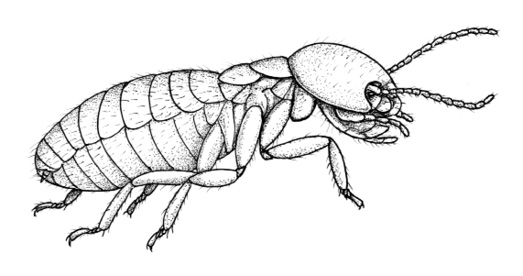
Pretreatment Method 1
Preconstruction horizontal soil treatment, followed by post-construction perimeter treatment. The first step in this method of termite pretreatment is treating the soil underneath the building site with an approved termiticide. This step establishes a horizontal barrier of insecticide-treated soil directly beneath the building. This treatment is applied after form boards, rebar, and sub-foundation plumbing are installed. It is applied just before concrete is poured for the slab or foundation and before any plastic vapor barrier is installed. Once the insecticide is applied, workers should minimize disturbance of the treated soil while installing the vapor barrier and pouring concrete. Workers should also observe the required reentry interval specified on the termiticide label.
The termiticide used in horizontal soil pretreatments is diluted with water to the concentration specified on the termiticide label. The solution is then sprayed over the soil surface of the prepared building site. Most pretreatment termiticide labels require that the finished solution be applied at a minimum rate of 1 to 1.5 gallons per 10 square feet, depending on the type of fill used under the slab. In other words, application requires equipment with a large spray tank capacity. It will take at least 200 gallons of finished liquid to treat a 2,000-square-foot site. In most situations, one of the pyrethroid termiticides (listed in Table 1), which tend to be lower in cost, is used for this portion of the pretreatment.
Depending on how the building is constructed, additional areas may also need to be treated when this first part of the pretreatment is applied. (See Figure 1 for examples of different foundation types). For example, buildings constructed on supported slabs or floating slabs, rather than monolithic slabs, may be raised several feet above ground level by adding fill dirt, sand, or gravel inside the foundation wall before pouring the slab. In such situations, the soil immediately adjacent to the inside wall must be treated by trenching and rodding. The amount of termiticide used depends on the depth of the fill. Most labels recommend 4 gallons of termiticide for every 10 linear feet, for every foot of depth. See the product label for specific requirements. Depending on the depth of the fill, pretreating such foundations can require much more termiticide, labor, and money than treating a simple monolithic slab with the same square footage. Contractors and builders should be aware of the additional time and expense required to treat these types of foundations properly.
The second part of this pretreatment method is applied after the building, final grading, and landscaping are complete around the immediate perimeter of the building. Mississippi regulations require that this perimeter treatment be applied within 1 year of the date that the preconstruction horizontal soil treatment was applied. This perimeter insecticide treatment is the most important component of the termite pretreatment process, and it is important to be sure it is/was applied at the appropriate time. Beginning in 2009, Mississippi regulations require pest control companies to post a small, weatherproof sign on the exterior electrical meter box. The sign must display the date the perimeter treatment was applied and contact information for the company that applied the treatment. Many companies place this sticker on the underside of the meter, but it may also be on the side.
Several different insecticide products are approved as perimeter termiticide pretreatments. The termiticide used for the postconstruction perimeter treatment is often different from the termiticide used for the preconstruction horizontal soil treatment. In most cases, one of the nonrepellent termiticides (listed in Table 1) is better for the perimeter pretreatment. Perimeter termiticide pretreatments must be applied according to directions on the termiticide label and must meet the minimum standards set by Mississippi law.
|
Active Ingredient |
Brand Name1 |
Repellent to Termites2 |
Type of Chemistry |
Years with at least 90% Control3 |
|
|---|---|---|---|---|---|
|
MS Test Site |
MS, SC, & FL Test Site Average |
||||
|
bifenthrin |
Biflex |
Yes |
Pyrethroid |
7 |
10 |
|
cypermethrin |
Demon |
Yes |
Pyrethroid |
5 |
4 |
|
permethrin |
Dragnet |
Yes |
Pyrethroid |
6 |
4.5 |
|
imidacloprid |
Premise |
No |
Nonrepellent |
2 |
6 |
|
fipronil |
Termidor |
No |
Nonrepellent |
12+ |
11.5+ |
|
chlorantraniliprole |
Altriset |
No |
Nonrepellent |
11+ |
11+ |
|
disodium, octaborate, tetrahydrate |
Bora-Care |
Yes |
Borate |
NA |
NA |
1Brand names are for the original proprietary product. Older active ingredients with expired patents may also be sold under other brand names, as “generics.”
2Lack of repellency is a positive attribute for soil-applied termiticides because termites are unable to detect and avoid treated soil.
3From Shelton et al., USDA Forest Service Termiticide Report, Pest Management Professional, April, 2015. Data for “Concrete Slab” test, for the lowest rate labeled for product. Products are considered to have “failed” when level of control drops below 90 percent.
This information is for educational and preliminary planning purposes only. Always refer to local building codes and product labels for specific building and product application requirements. Brand names mentioned in this publication are used as examples only, and no endorsement of these products is intended. Always read and follow the insecticide label.
Typically, perimeter treatments are applied by trenching around the outside of the foundation, treating the trench with part of the termiticide solution, backfilling the trench, and treating the backfill soil with the remaining solution. The pesticide label specifies the concentration of active ingredient in the termiticide solution, the size of the trench, and the amount of termiticide solution that must be applied per 10 linear feet of trench. In cases where concrete porches, walkways, patios, and carports prevent trenching immediately adjacent to the building, holes must be drilled through the concrete at specific intervals so termiticide can be injected into the area where the trench would have occurred. These holes are usually patched or plugged after treatment is complete.
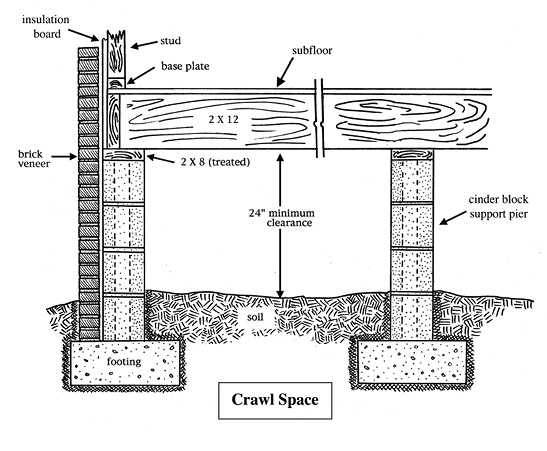
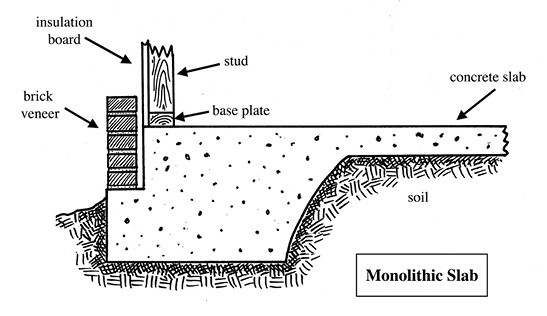
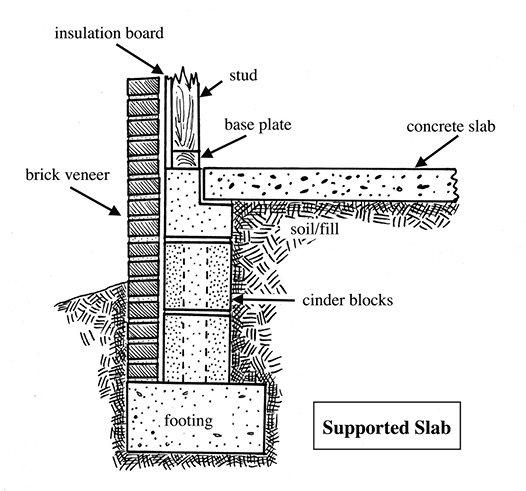
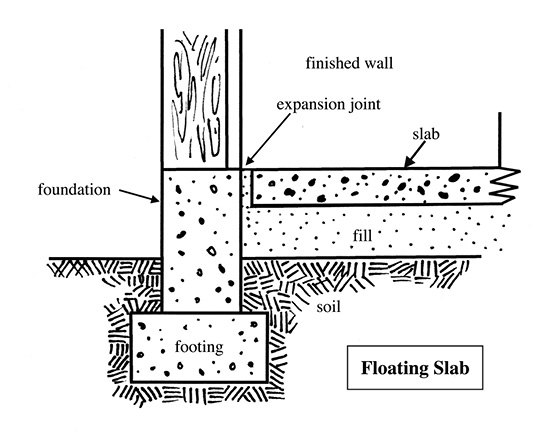
Figure 1. Generalized examples of the four most common types of foundation.
Buildings with basements or foundation footings that are below ground level in part or all of the building may require additional insecticide because the deeper soil next to the foundation must be treated. See the product label for specific requirements. As a result, it usually takes longer and costs more to properly pretreat buildings with basements or on supported or floating slabs than it does to pretreat a similar-size building on a simple monolithic slab.
The goal of the postconstruction perimeter treatment is to establish a barrier of termiticide-treated soil around the building so foraging termites will die or turn back before they invade the building. Once this termiticide barrier is established, it is important to avoid disturbing it. If you remove treated soil from the area or add untreated soil or mulch to the area, you have created an entry point for termites.
Repellent versus nonrepellent termiticides: The insecticides used to control subterranean termites can be grouped according to whether or not termites can detect their presence in soil. Termites will avoid tunneling through soil treated with termiticides they can detect, and such termiticides are classified as “repellent.” Termiticides that termites cannot detect are classified as “nonrepellent.” Nonrepellent termiticides tend to provide better termite protection than repellent termiticides. This is because foraging termites attempting to invade a house can avoid tunneling through soil treated with repellent termiticides—until they eventually encounter a break in the termiticide-treated barrier. In contrast, foraging termites do not detect nonrepellent termiticides and are killed when they tunnel through treated soil. Table 1 lists the most commonly used termiticides and indicates whether they are repellent or nonrepellent.
Pretreatment Method 2
Borate treatment, followed by post-construction perimeter treatment. This method of termite pretreatment first became available in 2008. Currently, Bora-Care (disodium octaborate tetrahydrate) is the only product approved for this use. The borate treatment is not applied until the building is in the “dried in” or “blacked in” stage of construction. In other words, it is applied when the roof, studs, exterior wall sheathing, and other framing elements are in place but before insulation and interior wall coverings (sheetrock, paneling, etc.) are installed; see the label for details. It takes only a few gallons of finished spray to apply a borate pretreatment, and such treatments are usually applied with small hand-pump or backpack sprayers.
On buildings on slab foundations, the product is applied to the lower 2 feet of studs, sill plates, exposed inside surfaces of exterior sheathing, and other framing elements in contact with the concrete slab. It is also applied to a narrow strip (2 to 8 inches) of the concrete slab along the sill plate. On buildings with crawl spaces, the product is applied inside the crawl space to all structural wood surfaces within 24 inches of the exterior walls and support piers and to all structural wood surfaces on the exterior wall within 24 inches of the header joist. It is also applied inside the crawl space to concrete or masonry surfaces on the lower 24 inches of the interior of the foundation wall and support piers. The product is also applied to concrete along expansion joints, wood or concrete around plumbing penetrations, and other areas exposed to termite invasion. See the product label for specific details.
The goal of a borate treatment is to create a 2-foot-wide zone above the slab or soil surface in which all exposed wood, masonry, and metal surfaces have been treated with the borate solution. Termites will not survive in wood that has been treated with borates, and they will not build their mud tunnels over surfaces that have been treated with it. These treated surfaces will eventually be covered when inner walls and flooring are installed.
The second step of this pretreatment process is to apply a post-construction perimeter termiticide treatment as previously described. This treatment must be applied within 1 year of the date of the borate treatment. Only EPA-registered termiticides with labels/24c supplemental labels approved for this use in Mississippi may be used for this post-construction perimeter treatment following a borate pretreatment.
Other Treatment Methods
Treated Wood
According to Mississippi regulations, wood treatment alone may not be used as the sole method of termite protection or pretreatment. Of course, treated wood may be used, but treated wood alone is not an adequate termite pretreatment, even if all the framing wood used in the house is treated wood. However, pressure-treated wood definitely should be used where appropriate in the construction to provide additional protection against termites and wood decay organisms.
Termite Baiting Systems
Termite baiting systems are sometimes used to treat or protect existing buildings from termites, but baiting systems are not recommended as a stand-alone termite pretreatment for new construction. However, Mississippi regulations do allow homebuilders to request an exception. Homebuilders who wish to use baiting systems as the sole method of termite pretreatment must provide the pest control operator with a written request, and the pest control operator must keep a copy of this request on file. Of course, the request must be made before any other type of pretreatment is applied. Homebuilders may also request an exception to allow use of a termite baiting system as the second step in pretreating a building in which either borate treatment or preconstruction horizontal soil treatment with liquid termiticide is used as the first step of the pretreatment program.
Physical Barriers
Physical barriers are not recommended as standalone termite pretreatments. However, physical barriers, such as termite shields, termite-proofing collars, stainless steel mesh foundation barriers, and others, can and should be used to enhance overall termite protection. Proper, appropriate use of physical termite barriers during construction, as well as other building practices that help reduce potential for termite infestation, are important first steps toward long-term termite prevention.
Life Span of Termite Pretreatment
Termite pretreatments do not last forever. The degree of protection they provide declines over time (see Table 1). The termiticide degrades over time, and the termiticide-treated barriers change physically (see Extension Publication 2568 Protect Your House from Termites). In trials conducted by the U.S. Forest Service at its Mississippi test site, the pyrethroid termiticides typically used for horizontal pretreatments provided at least 90 percent control for 5 to 7 years, with products containing bifenthrin providing longest-lasting control. In similar studies, the nonrepellent termiticides most often used for perimeter treatments maintained this level of control for 2 to 12 years, with products containing fipronil or chlorantraniliprole providing longest-lasting control.
Borate products are not evaluated in the same type trials as the soil-applied termiticides. In a 7-year study conducted by the Mississippi State University Department of Forest Products, the Bora-Care treatment provided 7 years of protection in a test situation with heavy termite pressure. Borate treatments are water-soluble and will readily leach from treated wood that is in contact with moist soil or exposed to leaks or other moisture problems. However, properly installed borate treatments can provide long-term termite protection when not exposed to water or excessive moisture.
Getting Bids for Termite Pretreatments
In most cases, the termite pretreatment is arranged and paid for by the building contractor as part of the overall construction cost. But if you are building or subcontracting the house yourself, this is one of the jobs you will need to arrange to have done.
Start by getting bids from several pest control companies so you can compare prices and get information about each company. Keep in mind that the lowest bid may not be the best bid. Termiticides vary in cost and duration of control, and the choice of termiticide and type of foundation construction can affect costs. Be sure the bid specifies which products will be used for each step in the pretreatment process and the rates at which they will be used. Most bids will be priced based on the lowest labeled rate of termiticide, and this is adequate for most situations. Because termiticides degrade over time, buildings need to be periodically retreated in order to maintain termite protection.
Paying the annual contract renewal fee is the best way to maintain continuous termite protection on a home. The terms of such contracts usually include a yearly inspection for termites and retreatment of any termite infestations detected while the building is under contract. Most contracts do not cover repair cost due to termite damage; some do, but the renewal fee is usually higher for contracts that cover damage repair. Be sure you understand the terms of the contract. Because termiticides degrade over time, most buildings need to be retreated at some point in order to reestablish termite protection.
For additional information on termites, termite biology, how to identify termite damage, factors that increase risk of termite infestation, and how to control termites in existing buildings, see Extension Publication 2568 Protect Your House from Termites. You can access this publication by going to www.extension.msstate.edu, clicking on Publications, and searching for the title. Also see http://extension.msstate.edu/termites for more information on biology and control of termites.
This work is partially supported by Crop Protection and Pest Management, Extension Implementation Program grant no. 2017-70006-27200/project accession no. 1014037 from the USDA National Institute of Food and Agriculture. Any opinions, findings, conclusions, or recommendations expressed in this publication are those of the author(s) and do not necessarily reflect the view of the U.S. Department of Agriculture.
The information given here is for educational purposes only. References to commercial products or trade names are made with the understanding that no discrimination is intended against other products that may also be suitable.
Publication 2765 (POD-03-21)
By Blake Layton, PhD, Extension Professor, Biochemistry, Molecular Biology, Entomology and Plant Pathology, and Joe MacGown, Research Technician/Scientific Illustrator, Biochemistry, Molecular Biology, Entomology, and Plant Pathology.
The Mississippi State University Extension Service is working to ensure all web content is accessible to all users. If you need assistance accessing any of our content, please email the webteam or call 662-325-2262.


